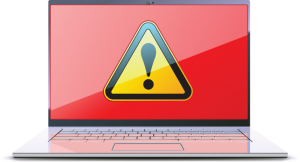
The phone rings and you don’t recognize the number or name on the caller ID. You pick up anyway and the caller tells you that they work for Windows Support or Windows Service Center and they are a Microsoft Certified Technician.
They go on to say they have received log files or have determined that your computer is infected and causing corruption throughout your Windows operating system.
They ask if you’re at your computer now and, if not, to go there. Once there, they walk you through how to open your Event Viewer and show you the Administrative Events under the Custom Views folder.
They are quick to point out all of the red circles labeled “Error” are all Malware infections. They then ask you to look at the number of events listed and they go on to advise this is the total number of infections currently on your computer.
The caller then says they can clean your system of all infections, but they will need to have remote access to the computer.
At this point in the call, most people have been thoroughly convinced by the voice on the other end of the phone that their system is indeed infected and needs to be cleaned. After all, the caller knew where to look for the so-called infections and they do sound like they truly want to help.
The Microsoft “employee” will even tell you that if you don’t let them remove the infections, the “hackers” that placed the malware on your system will have complete access to all of your information.
They warn that your identity is in jeopardy of being stolen. You must give them remote access to your computer. They are your only hope and you must trust them. After all, they say they work for Microsoft.
The fact of the matter is that the caller does not work for Microsoft in any capacity. They don’t work for any of their third party vendors nor any security firm that has been retained by Microsoft.
They are in fact the “hackers” attempting to convince you to give them access to your computer to infect your system and steal your data.
If you allow them remote access, they will start to install malicious programs on your computer. They’ll copy all of your information and, in some cases, encrypt your data.
They will tell you that that the infection is too severe for a “standardized” cleaning and you will need to pay money to have them install removal programs to clean the system.
In mid-2013, NBC News Technology reporter Frank Catalano, reported on receiving one such phone call himself.
After his ordeal with the fake Microsoft, Mr. Catalano contacted the real Microsoft. He received the following reply:
“In 2010, Microsoft began receiving reports of scammers making phone calls or sending emails to people,” replied a spokesperson for Microsoft’s Digital Crimes Unit. They advised that they had referred the cases to the Federal Trade Commission.
One very important thing to remember is that Microsoft (or any of its partners) will never cold call you. They will never ask for remote assistance. They will never ask for usernames and passwords.
If you have fallen victim to such a scam, disconnect your network cable and take your computer to a trusted service center or repair facility and explain in detail what happened as soon as possible.
For questions or advice on what to do about cold call scammers, contact Tech Experts at (734) 457-5000, or by email at info@mytechexperts.com.



 Like other viruses and malware, malvertisements take advantage of security vulnerabilities on users’ computers and mobile devices. These may be anywhere from the operating system, to web browsers and other applications, to add-ons and extensions like Java, JavaScript, and Flash.
Like other viruses and malware, malvertisements take advantage of security vulnerabilities on users’ computers and mobile devices. These may be anywhere from the operating system, to web browsers and other applications, to add-ons and extensions like Java, JavaScript, and Flash.